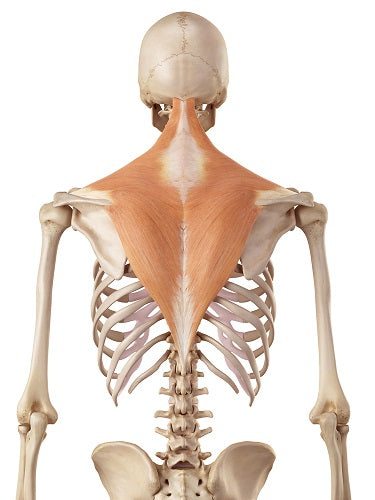
Muscle Anatomy
trapezius
The trapezius, a large and kite-shaped muscle, spans the upper back and neck, contributing to shoulder and neck movements.
Origin:
Arising from the external occipital protuberance, the nuchal ligament, the spinous processes of the seventh cervical vertebra (C7), and the spinous processes of all thoracic vertebrae (T1-T12), the trapezius has its origin along the spine.
Insertion:
The muscle inserts into the lateral third of the clavicle, the acromion process, and the spine of the scapula, forming a broad attachment on the shoulder girdle.
Function:
The trapezius has multiple functions depending on its region:
- The upper fibers elevate the scapula, assisting in movements like shrugging the shoulders.
- The middle fibers retract the scapula, pulling it toward the spine.
- The lower fibers depress the scapula, aiding in movements like lowering the shoulders.
Overall, the trapezius plays a crucial role in stabilizing and coordinating movements of the shoulder girdle and neck.
